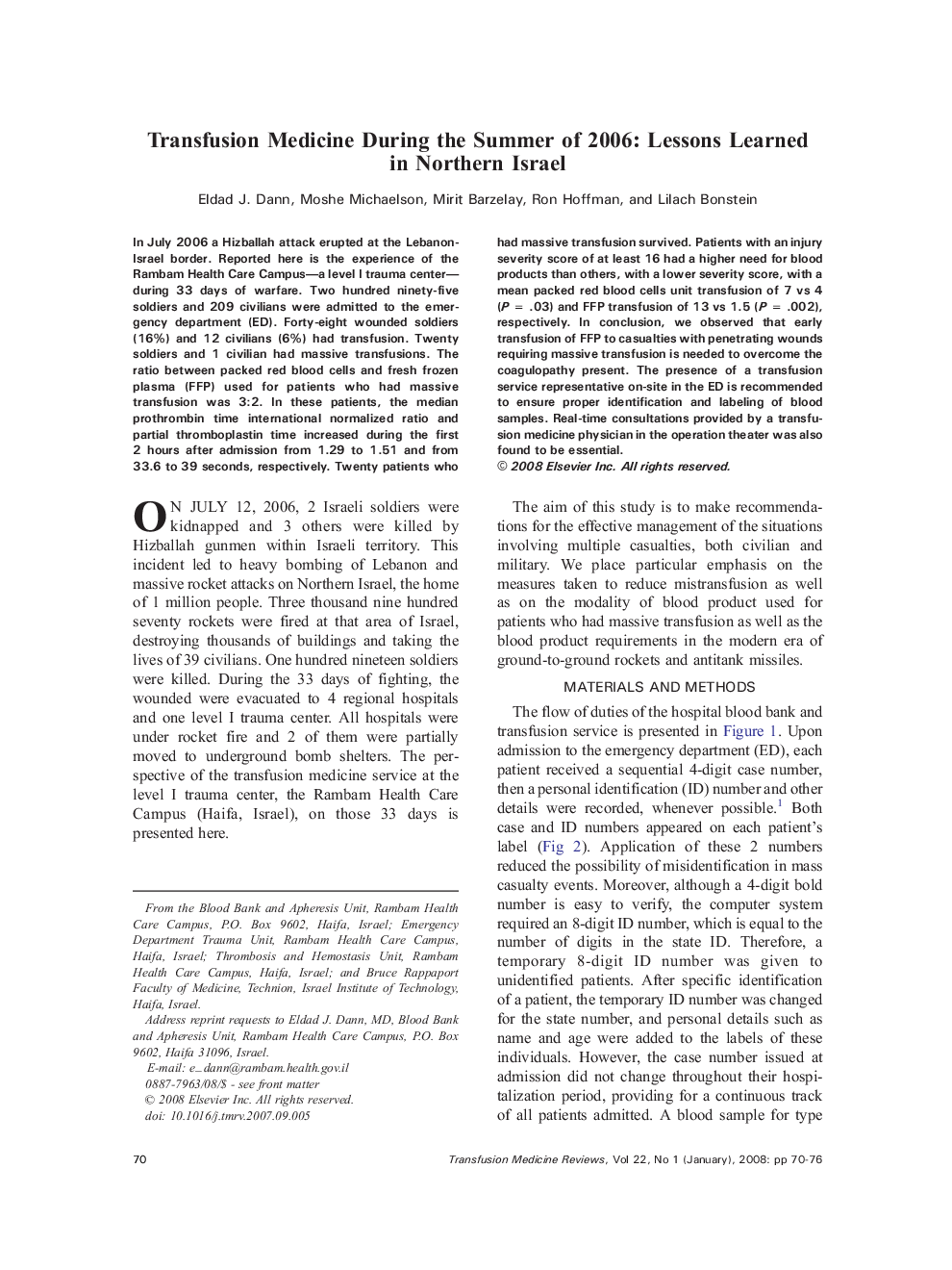| Article ID | Journal | Published Year | Pages | File Type |
|---|---|---|---|---|
| 3336945 | Transfusion Medicine Reviews | 2008 | 7 Pages |
In July 2006 a Hizballah attack erupted at the Lebanon-Israel border. Reported here is the experience of the Rambam Health Care Campus—a level I trauma center—during 33 days of warfare. Two hundred ninety-five soldiers and 209 civilians were admitted to the emergency department (ED). Forty-eight wounded soldiers (16%) and 12 civilians (6%) had transfusion. Twenty soldiers and 1 civilian had massive transfusions. The ratio between packed red blood cells and fresh frozen plasma (FFP) used for patients who had massive transfusion was 3:2. In these patients, the median prothrombin time international normalized ratio and partial thromboplastin time increased during the first 2 hours after admission from 1.29 to 1.51 and from 33.6 to 39 seconds, respectively. Twenty patients who had massive transfusion survived. Patients with an injury severity score of at least 16 had a higher need for blood products than others, with a lower severity score, with a mean packed red blood cells unit transfusion of 7 vs 4 (P = .03) and FFP transfusion of 13 vs 1.5 (P = .002), respectively. In conclusion, we observed that early transfusion of FFP to casualties with penetrating wounds requiring massive transfusion is needed to overcome the coagulopathy present. The presence of a transfusion service representative on-site in the ED is recommended to ensure proper identification and labeling of blood samples. Real-time consultations provided by a transfusion medicine physician in the operation theater was also found to be essential.
